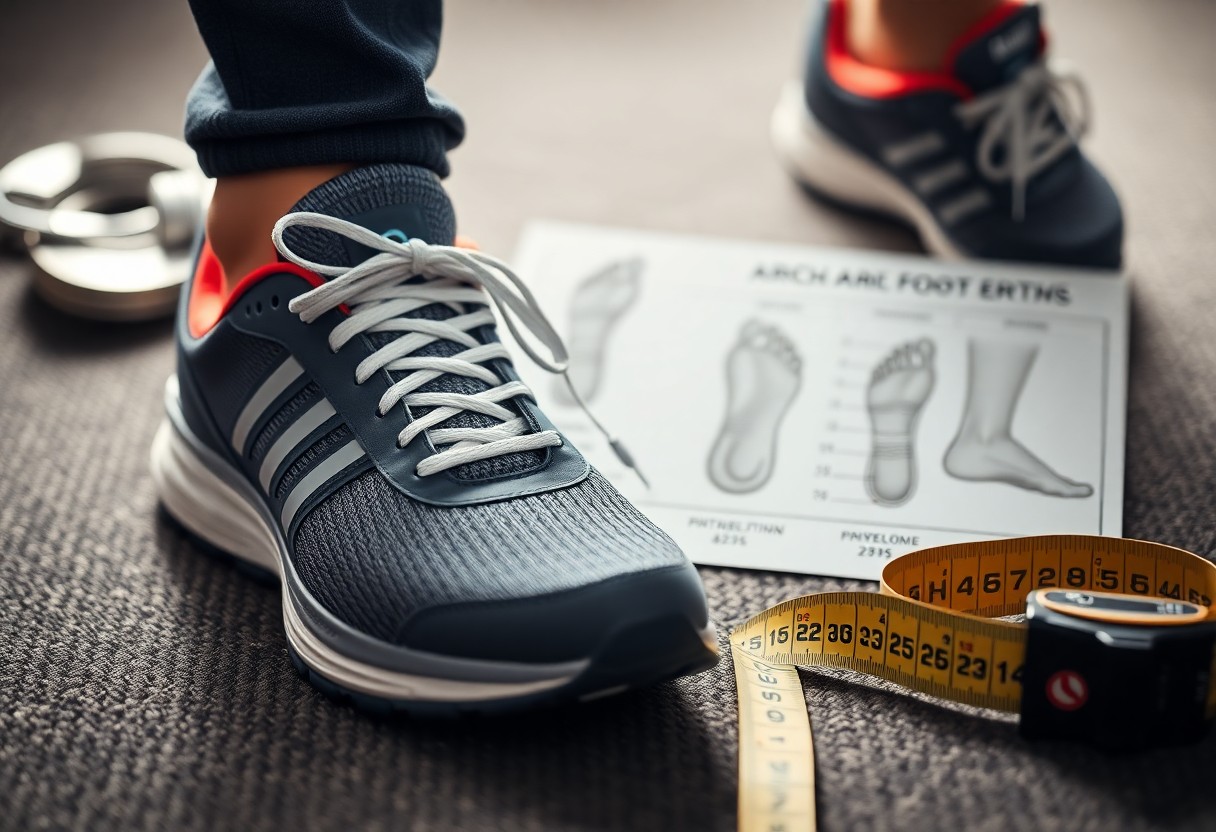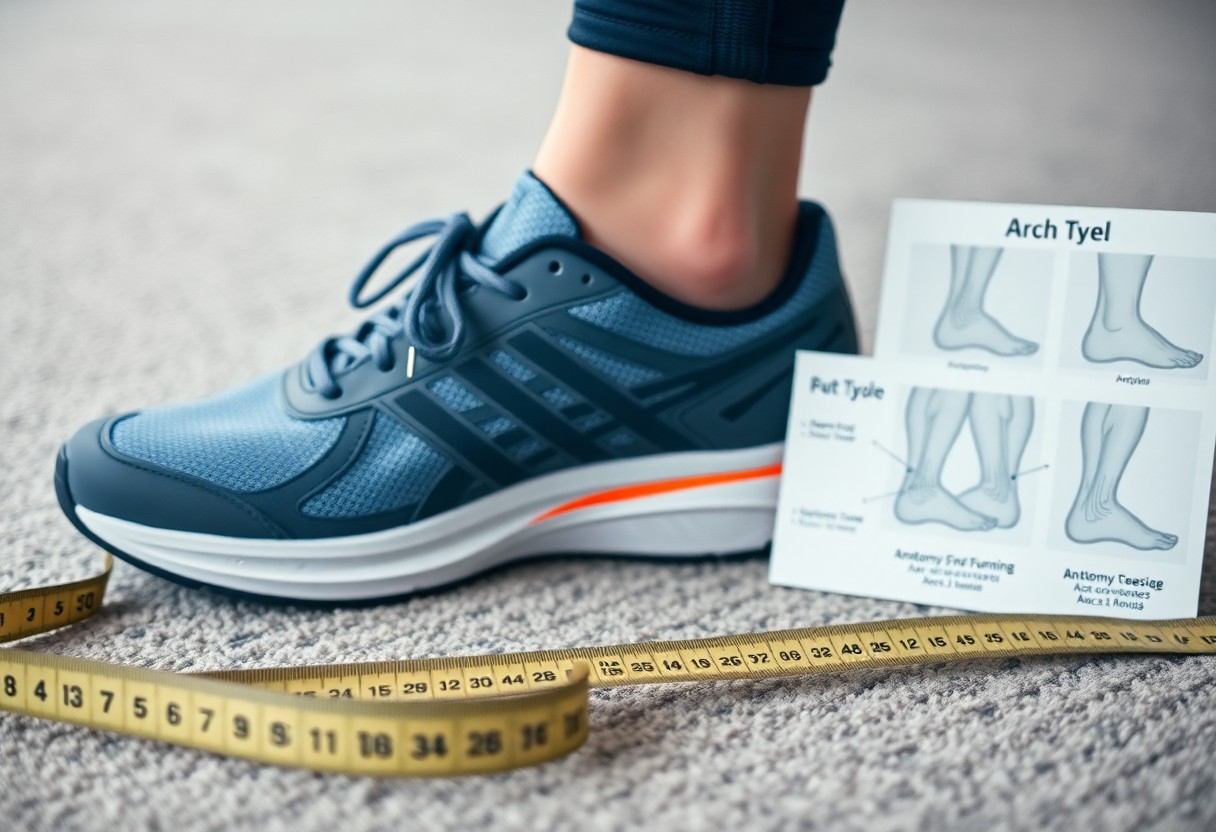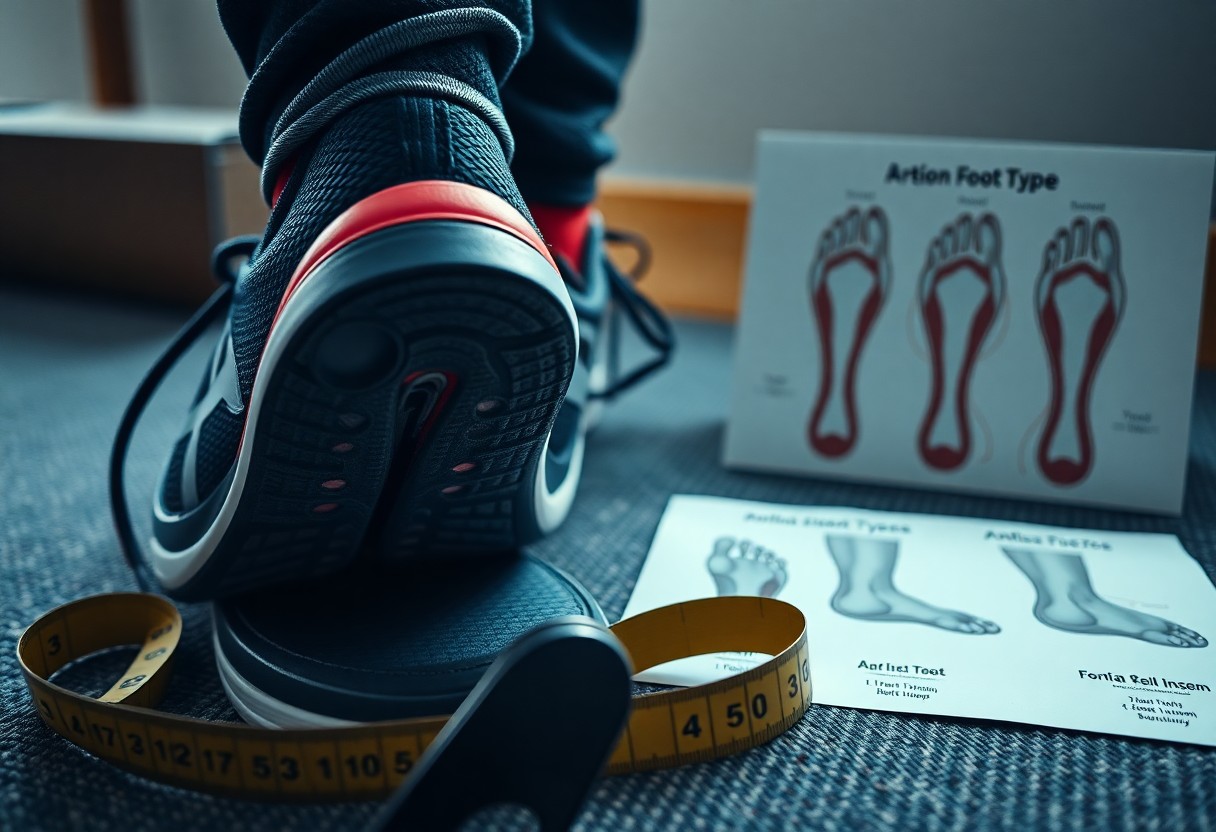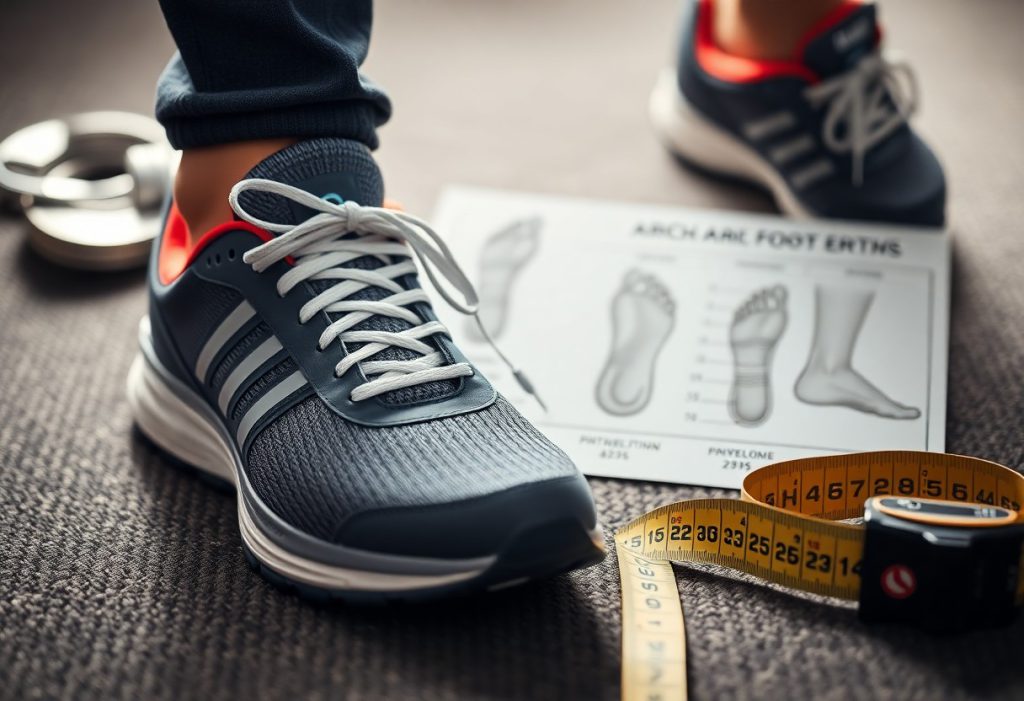Properly supporting your feet does not necessarily mean adding arch support to your shoes. Surprisingly, most individuals do not actually need arch support in their footwear. Scientific studies have indicated that avoiding artificial arch support can enhance the strength of your foot muscles over time. When you rely too heavily on external supports, you may inadvertently weaken these muscles. The human foot is naturally equipped with arches that flex and adjust to different surfaces. Restricting this natural movement with rigid supports may negatively impact your foot health in the long run. This detailed article will explore the science of arch support, empowering you to make enlightened decisions about your foot health.

Understanding the Historical Development of Arch Support in Footwear
The natural support system of your feet has played a pivotal role in footwear design throughout history. The concept of arch support became prominent in the 1920s, largely due to Dr. William Scholl's groundbreaking work in commercial orthotics. Before this innovation, people relied on the inherent strength and flexibility of their feet for support. This historical background sheds light on how our understanding of foot health has developed over time, revealing a shift from reliance on natural foot mechanics to the incorporation of artificial aids.
The Transformation of Footwear Practices Through History
The evolution of footwear illustrates that ancient cultures primarily utilized simple, flat sandals or often chose to go barefoot. Such practices encouraged natural foot development and strength. The feet of our ancestors remained strong and flexible, thriving without artificial supports. Research on indigenous populations, who continue to practice traditional footwear habits, further supports the notion that natural foot mechanics are crucial for maintaining optimal foot health. This historical insight underscores the significance of respecting our feet's natural design and function.
The Shift in Modern Shoe Design Standards
By the mid-20th century, particularly in the 1950s, shoe manufacturers began to standardize built-in arch support in their products. Today, a majority of modern footwear incorporates structured arch support, a feature that has become commonplace despite limited scientific evidence supporting its necessity for everyone. This trend highlights a significant shift in consumer expectations and manufacturing norms, raising important questions about how these designs impact overall foot health and functionality.
Currently, approximately 70% of modern shoes are equipped with arch support features. Nonetheless, research published in the Journal of Foot and Ankle Research indicates that excessive dependency on arch support may result in muscle weakness in the feet. As a response, many podiatrists now recommend engaging in periodic barefoot walking and selecting minimally supportive footwear to help maintain and enhance natural foot strength.

Deciphering the Complex Structure of Foot Anatomy
Your feet consist of 26 bones, 33 joints, and over 100 muscles, which function most efficiently when given the freedom to move naturally. The foot's arch acts as a self-supporting structure, gaining strength through regular activity and losing it when confined by artificial support. Studies reveal that 75% of individuals wearing conventional shoes with arch support experience reduced foot muscle activity, potentially leading to a decline in natural foot strength over time. This emphasizes the need to consider how footwear choices influence our foot health.
Unraveling the Mechanics of Natural Foot Function
The natural design of your foot is an extraordinary feat of engineering, featuring a complex self-support system. Walking barefoot or in minimally designed shoes allows for a full range of motion, enabling the arches to flex and strengthen as intended. Research indicates that individuals who regularly walk barefoot or wear minimal shoes develop stronger foot muscles and more stable arches compared to those who rely on traditional supportive footwear. This illustrates the critical role that natural movement plays in promoting foot health and overall well-being.
Boosting Foot Muscle Function and Growth
Limiting your foot's natural movement can stifle its development. Your foot muscles thrive on regular engagement through natural activities to sustain their strength. Research published in Nature has shown that wearing shoes without arch support contributes to the development of stronger intrinsic foot muscles. This finding highlights the importance of allowing your feet to move freely for optimal health and strength.
Furthermore, it is vital to understand the implications of wearing shoes with built-in arch support. Such footwear can lessen engagement of the foot muscles, potentially leading to weakness over time. Studies have demonstrated that transitioning to minimalist footwear can yield an astonishing increase in foot muscle strength by as much as 60% within eight weeks. However, it's essential to approach this transition with care, especially if you have existing foot conditions, to minimize the risk of injury.
Investigating Research and Evidence on Foot Health Dynamics
If you are keen to understand the scientific principles behind arch support, numerous studies have shown that your feet can strengthen without artificial support. Various investigations underscore that natural foot movement encourages superior muscle development and enhances arch stability, emphasizing the vital connection between biomechanics and foot health.
Key Scientific Research Findings on Arch Support
Among the most significant findings, a study published in Nature shows that individuals who wear minimal footwear develop foot muscles that are 50% stronger than those who wear traditional supportive shoes. This evidence supports the idea that consistent movement and exercise are essential for maintaining the arches of your feet naturally, leading to healthier foot functionality.
Comparative Footwear Analysis Across Different Populations
Contrasting Users of Traditional Footwear and Minimal Footwear
| Traditional Shoe Users | Minimal Shoe Users |
| Exhibit higher rates of flat feet | Demonstrate superior arch strength |
| Show weaker foot muscles | Exhibit stronger foot muscles |
A comprehensive analysis across various populations reveals notable differences in foot health. The type of shoes you choose can significantly influence your foot structure and overall strength, showcasing the importance of making informed footwear choices.
Insights from Studies Conducted in Global Populations
| Developed Countries | Barefoot Communities |
| 20% flat foot occurrence | 3% flat foot occurrence |
| Higher reliance on arch support | Natural arch strength |

Examining the Support Paradox in Footwear Choices
Challenging the conventional wisdom, overreliance on arch support in shoes can weaken your feet’s intrinsic strength. The human foot is designed with a complex array of muscles, tendons, and ligaments that work together to provide natural support. When external arch supports are used, the foot muscles may become less active, leading to gradual muscular atrophy.
Understanding the Cycle of Dependency on Arch Support
Continuous reliance on arch support creates a negative feedback loop. Feet can become dependent on external support, resulting in muscle atrophy. Research indicates that 70% of individuals who routinely use arch support report increased discomfort when walking without their supportive shoes, thereby illustrating the development of this dependency.
Exploring the Link Between Muscle Weakness and Arch Support Usage
Wearing shoes with built-in arch support could weaken your intrinsic foot muscles by as much as 50%, according to findings in Nature. Such weakening compromises the foot's natural arch support system, potentially leading to issues like flat feet and other complications. It's important to understand that this muscle weakness can extend beyond your feet, as weakened foot muscles can adversely affect your overall posture and balance. Research shows that individuals transitioning to minimal footwear often experience a 60% increase in foot muscle strength within six months.
Discovering Natural Alternatives for Optimal Foot Health
For those interested in stepping away from traditional arch support, various natural options are available to enhance foot strength. These approaches focus on allowing your feet to function as they were designed, fostering the development of stronger foot muscles and more stable arches through natural movement.
Adopting Minimalist Footwear for Enhanced Natural Mobility
Minimalist shoes, characterized by zero drop soles, wide toe boxes, and flexible materials, promote natural foot movement. These designs facilitate unhindered motion, helping maintain proper foot mechanics and encouraging natural arch strength. Research suggests that regular use of minimal footwear can increase foot muscle strength by up to 60% through daily activities.
Safe Strategies for Transitioning to Minimal Footwear
When considering a transition to minimalist footwear, it is essential to take a careful and gradual approach to ensure safety and comfort. Start by wearing minimal shoes for short durations, gradually increasing the time as your feet adjust over several weeks. This method helps to prevent overuse injuries as your feet adapt to their newfound freedom, promoting a smoother transition.
A successful transition should ideally include specific foot-strengthening exercises. Begin with 10-15 minutes each day in minimal shoes, adding an additional 5-10 minutes weekly. Incorporate exercises such as toe spreads and short barefoot walks on safe surfaces. This incremental approach minimizes the risk of common transition injuries while effectively strengthening your natural arch.
Considering Medical Factors in Foot Health Management
It's crucial to recognize that your foot health may require personalized strategies. While natural foot movement is beneficial for muscle strength, certain medical conditions may necessitate specific types of support. Factors such as your foot structure, activity level, and pre-existing conditions will dictate your ideal footwear requirements.
Recognizing When Arch Support is Essential for Foot Health
Contrary to prevalent beliefs, arch support is not universally necessary. Nevertheless, individuals with acute injuries, severe flat feet, or specific medical conditions might benefit from temporary or permanent arch support. Research indicates that only 10-20% of the population genuinely requires specialized arch support for medical reasons, emphasizing the necessity of personalized evaluations.
Guidelines for Comprehensive Professional Foot Health Evaluations
To ensure you make informed choices regarding your footwear, consulting a foot health professional is advisable. Thorough assessments should include gait analysis, evaluations of foot structure, and reviews of your medical history. These components are essential for determining whether you need arch support or if transitioning to minimal footwear is feasible for you.
Support from a qualified professional can offer clarity and guidance for your foot health journey. A comprehensive assessment should measure arch flexibility, assess muscle strength, and analyze walking patterns. Your healthcare provider should also consider your daily activities and any previous foot injuries to create an effective treatment plan tailored to your specific needs.
Reevaluating Footwear Choices for Optimal Foot Health
Your footwear choices profoundly influence your overall foot health. You now understand that arch support is not essential for most people and may, in fact, weaken foot muscles over time. Your feet possess innate strength and flexibility, performing best when allowed to function as nature intended. If you are contemplating a shift to minimal footwear, initiating this process gradually is crucial for effective adaptation. The evidence strongly suggests that allowing your feet to operate without artificial support can lead to stronger muscles and enhanced foot health for the majority. Always consider your individual needs and consult a foot health professional for specific concerns.
Frequently Asked Questions About Arch Support and Foot Health
Do healthy feet require arch support in shoes?
Most healthy feet do not need arch support in shoes. Research indicates that natural foot strength develops more effectively without artificial support. The muscles and arches of the foot perform optimally when allowed to operate naturally, aligning with studies on populations that frequently go barefoot or prefer minimal shoes, which show stronger foot muscles and fewer arch-related issues.
Can prolonged use of arch support weaken feet over time?
Yes, extended reliance on arch support can lead to weakened foot muscles. When artificial support assumes the role of foot muscles, these muscles become less engaged and gradually lose strength, creating a cycle of dependency. Research published in Nature indicates that individuals who consistently wear conventional shoes with arch support often have weaker foot muscles compared to those who choose minimal footwear.
Who genuinely needs arch support in their footwear?
Some individuals with specific foot conditions, injuries, or medical issues may benefit from arch support. This includes those diagnosed with flat feet, certain foot injuries, or structural abnormalities. However, these situations should be evaluated by a foot health professional capable of developing an appropriate treatment plan. The goal should be to restore natural foot function whenever possible, rather than relying on permanent support.
The Article Arch Support: Essential Facts About Shoe Necessities Was Found On https://limitsofstrategy.com


I find this discussion about arch support in footwear really intriguing, especially considering how deeply ingrained the notion of needing arch support has become in our minds. It’s fascinating to reflect on how our views on foot health and support have evolved over the years. I grew up in a time when recommendations for footwear were often centered around cushioning and arch support, so reading about the potential downsides of relying on these supports truly made me pause.
This is such an intriguing perspective on foot health! I’ve often found myself in the cycle of buying shoes with arch support, convinced they were the solution to my foot issues. Your point about the importance of strengthening our foot muscles really resonates with me. It makes me think of how many modern conveniences—like cushioned running shoes—might actually be doing us a disservice in the long run.
I completely understand where you’re coming from. It’s so easy to get caught in the cycle of looking for quick solutions, especially with the flood of marketing around shoes that promise to support us in all the right ways. I used to think the same—arch support felt like a band-aid solution, but I’ve realized that focusing on strengthening the foot muscles can lead to more lasting benefits.
It’s interesting how we often look to shoes for solutions, especially when it comes to discomfort. The idea that arch support is the be-all and end-all for foot issues is something many of us buy into. We see a flashy pair of supportive shoes, and it feels like a quick fix. But then we keep finding ourselves in that same rut. Your experience highlights a common struggle, and it opens up an important conversation about how our choices in footwear are really shaping our foot health.